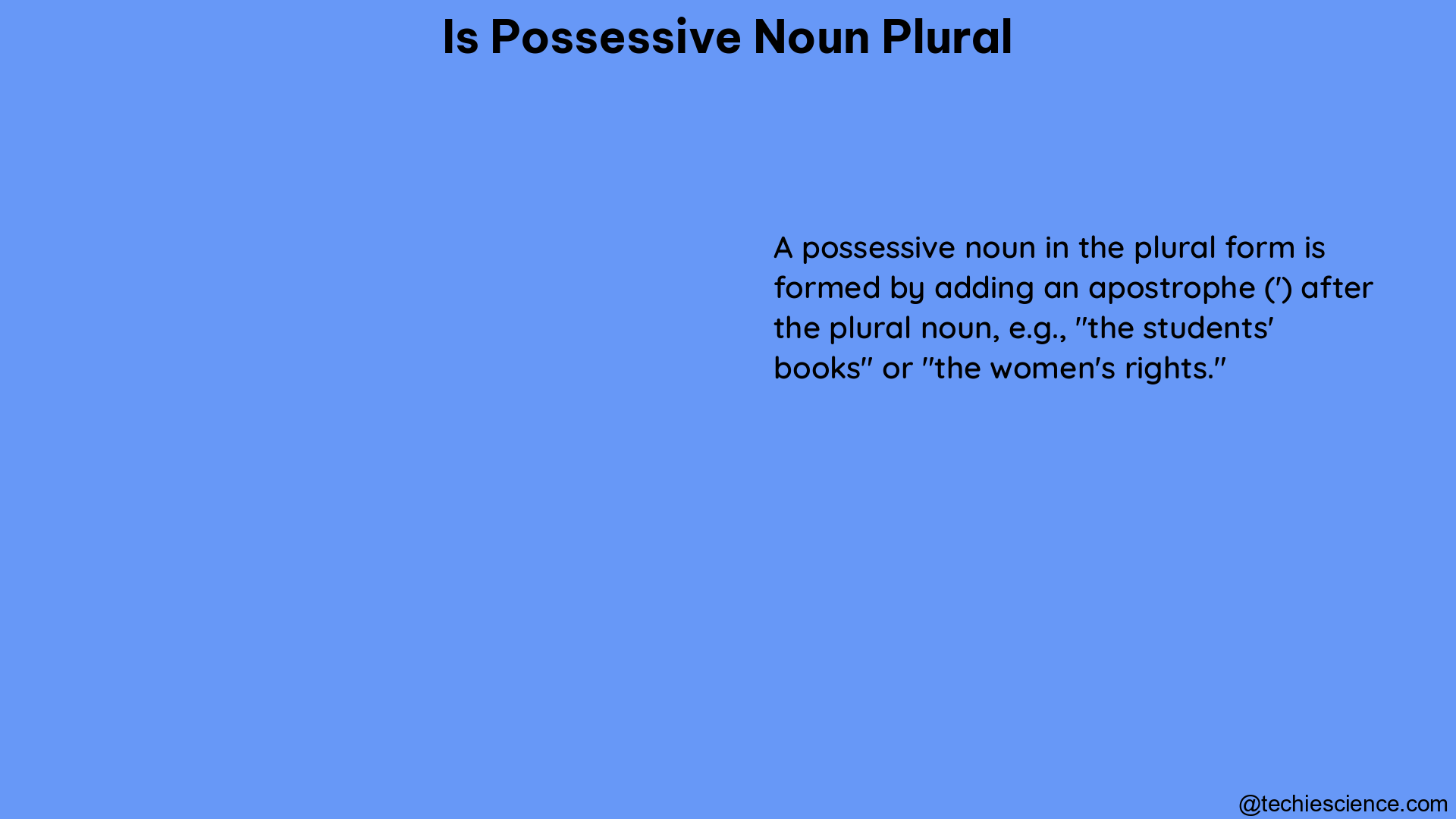Plural possessive nouns are a crucial aspect of English grammar, as they allow us to express ownership or possession by multiple entities. Understanding the rules and nuances of forming plural possessive nouns is essential for effective written and spoken communication. In this comprehensive guide, we will delve into the intricacies of plural possessive nouns, providing you with a thorough understanding of this grammatical concept.
Understanding Plural Possessive Nouns
A plural possessive noun is a noun that indicates ownership or possession by more than one person, place, or thing. These nouns are formed by adding an apostrophe and an “s” (or just an apostrophe, depending on the noun) to the plural form of the noun.
Forming Plural Possessive Nouns

The process of forming plural possessive nouns can be divided into two main categories:
1. Plural Nouns Ending in “s”
For plural nouns that end in “s,” the possessive form is created by adding an apostrophe after the “s.” Here are some examples:
- The dogs’ toys are scattered around the room.
- The students’ assignments were due last week.
- The teachers’ lounge is closed for renovations.
2. Plural Nouns Not Ending in “s”
For plural nouns that do not end in “s,” the possessive form is created by adding an apostrophe and an “s” to the end of the noun. This is often the case with irregular plural nouns. Here are some examples:
- The children’s playground is well-maintained.
- The women’s soccer team won the championship.
- The men’s clothing section is on the second floor.
Compound Plural Possessive Nouns
When dealing with compound nouns (nouns made up of two or more words), the possessive form is added to the last word in the compound. Here are some examples:
- The mothers-in-law’s advice was not always helpful.
- The attorneys general’s decision was controversial.
- The secretaries of state’s policies were widely debated.
Plural Possessive Nouns with Multiple Owners
In situations where multiple owners possess the same item, each owner’s possession should be indicated separately. This is done by adding the possessive form to each owner. Here are some examples:
- Jack’s, Jill’s, and Tom’s cars were all parked in the driveway.
- The players’ and coaches’ strategies were discussed during the team meeting.
- The sisters’ and brothers’ rooms were all cleaned before the family gathering.
Exceptions and Irregular Plural Possessive Nouns
While the rules for forming plural possessive nouns are generally straightforward, there are some exceptions and irregular cases to be aware of. These include:
- Irregular plural nouns, such as “men,” “women,” and “children,” which require an apostrophe and an “s” to form the possessive.
- Nouns that are already possessive, such as “the girls’ dresses” and “the boys’ toys,” which do not require additional apostrophes or “s” forms.
- Collective nouns, such as “team,” “family,” and “group,” which can be treated as either singular or plural possessive, depending on the context.
Practicing Plural Possessive Nouns
To solidify your understanding of plural possessive nouns, it’s essential to practice using them in various contexts. Here are some exercises you can try:
- Identify the plural possessive nouns in the following sentences:
- The cats’ toys were scattered throughout the house.
- The women’s basketball team won the championship.
-
The children’s playground was closed for maintenance.
-
Rewrite the following sentences using the correct plural possessive form:
- The book covers are all different.
- The car tires need to be rotated.
-
The employee schedules were updated.
-
Create your own sentences using plural possessive nouns, covering the different rules and exceptions discussed in this guide.
By practicing these exercises, you’ll develop a stronger understanding of plural possessive nouns and be able to apply them confidently in your written and spoken communication.
Conclusion
Mastering the use of plural possessive nouns is a crucial skill for any English language learner or writer. This comprehensive guide has provided you with a deep understanding of the rules, exceptions, and best practices for forming and using plural possessive nouns. By applying the knowledge gained here, you’ll be able to communicate more effectively and accurately, demonstrating your command of the English language.
Reference:
- Plural Possessive Nouns by Buena San Hafide
- Grammar guide: Plurals and possessives by Khan Academy
- Plural Possessive Noun by The Blue Book of Grammar and Punctuation
- Possessive Nouns: How to Use Them, With Examples by Grammarly
- What Is a Plural Possessive Noun? Meaning and Usage by YourDictionary

Hi…..I’m a graduate with a Bachelor’s degree in English Literature. I wish to do a Masters in the same field someday and continue my career in Academia.
Let’s connect through LinkedIn: